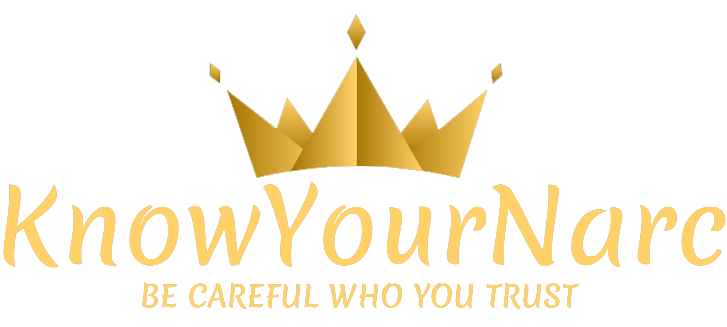Have you ever felt a confusing chill from someone close, like they’re there—but not really there? That’s the tricky world of emotional withholding, a subtle form of abuse that often flies under the radar. Unlike overt arguments or harsh words, emotional withholding hides in plain sight, quietly eroding relationships and self-esteem. In this blog post, we’ll unpack what emotional withholding really is, why it’s so powerful, and how to recognize and respond to it—because understanding is the first step toward healing and creating healthier connections. Let’s dive in!
Table of Contents
- Understanding Emotional Withholding and Its Impact on Relationships
- Recognizing the Signs Subtle Abuse Can Often Go Unnoticed
- How Emotional Withholding Affects Mental Health and Self-Esteem
- Practical Steps to Heal and Foster Open Communication
- In Conclusion
Understanding Emotional Withholding and Its Impact on Relationships
Emotional withholding often operates like an invisible wall between partners, gradually eroding trust and intimacy without overt confrontation. Unlike physical or verbal abuse, its power lies in its subtlety — it can be as simple as ignoring a partner’s vulnerability, shutting down during conversations, or refusing to share feelings. Over time, this silence or emotional coldness creates a breeding ground for confusion, resentment, and loneliness. It’s important to recognize that withholding isn’t always intentional; sometimes it’s a defense mechanism born from fear, past trauma, or a lack of emotional awareness.
The consequences ripple far beyond the moment of silence. People experiencing emotional withholding may feel disconnected, invalidated, or devalued, which can deeply affect self-esteem and relationship satisfaction. Some common signs include:
- Feeling emotionally starved despite physical proximity
- A persistent sense of walking on eggshells around the partner
- Heightened anxiety and suspicion when attempting to communicate
- Withdrawal from shared activities and lack of mutual support
Addressing these patterns requires more than just surface-level attempts at communication; it involves building emotional literacy, practicing vulnerability, and fostering a safe space where both people can express their deepest feelings without fear of judgment or rejection.
Recognizing the Signs Subtle Abuse Can Often Go Unnoticed
One of the most challenging aspects of subtle emotional abuse is how easily it blends into everyday interactions. Unlike overt abuse, which often has clear, visible signs, subtle dynamics are cloaked in silence, avoidance, or seemingly minor omissions. You might find yourself feeling inexplicably distant, exhausted, or doubting your own perceptions—all classic indicators that something is off beneath the surface. Often, these behaviors manifest as consistent neglect in communication, small but purposeful withholding of affection, or a pattern of dismissiveness that chips away at your confidence quietly over time.
To navigate these confusing waters, it helps to look out for certain telltale signs that often go unnoticed. Watch for patterns such as:
- Consistent avoidance of meaningful conversations or emotional topics
- Frequent interruptions or refusal to acknowledge feelings
- Subtle sarcasm or backhanded compliments that leave you questioning your worth
- Selective silence or “the cold shoulder” that creates emotional distance
- A reluctance to share time, attention, or support during vulnerable moments
Recognizing these signs early can empower you to challenge the dynamics before they erode your sense of self. Trusting your instincts and validating your feelings is an essential step toward reclaiming emotional safety and fostering healthier connections.
How Emotional Withholding Affects Mental Health and Self-Esteem
When someone consistently withholds their emotions, it can create a pervasive sense of emotional neglect for the recipient. This subtle form of abuse often leads to feelings of confusion and loneliness, as the individual struggles to understand why their emotional needs are unmet. Over time, this lack of emotional nourishment chips away at mental well-being, resulting in increased anxiety, depression, and a persistent feeling of being unseen or unvalued. The mind starts to question its own worth, and the impact can manifest in both day-to-day interactions and long-term psychological health.
Self-esteem suffers profoundly when emotions are withheld because it sends the unspoken message that one’s feelings are unimportant or invalid. This can lead to a destructive internal dialogue, where individuals blame themselves for the emotional distance and begin to doubt their intrinsic value. The effects might include:
- Difficulty trusting others or forming deep connections
- Impaired ability to express emotions openly
- Heightened sensitivity to rejection and criticism
Recognizing these patterns is the first step toward healing and reclaiming a healthier, more connected sense of self.
Practical Steps to Heal and Foster Open Communication
Healing from emotional withholding often feels like navigating a labyrinth, but taking deliberate, compassionate steps can illuminate the path to genuine connection. Start by cultivating self-awareness: recognize the moments you or your partner shut down emotionally without judgment. Practice journaling or mindfulness exercises to explore underlying feelings that may be difficult to express. This foundation encourages not just self-healing but also opens the door for empathetic dialogue. Remember, healing is a process, not a quick fix.
Next, foster open communication by creating a safe space where vulnerability is welcomed and respected. Implement these practical actions:
- Set aside undistracted time to talk—phones off, no interruptions allowed.
- Use “I” statements to express feelings without accusing or blaming.
- Practice active listening: reflect back what you hear and ask clarifying questions.
- Establish boundaries around respectful language and behaviors.
With patience and consistency, these small habits can dismantle walls that emotional withholding builds and nurture an environment where honesty and love thrive.
In Conclusion
Wrapping things up, emotional withholding might seem subtle, even easy to overlook — but its impact runs deep. Recognizing these quiet forms of abuse is the first step toward healing and reclaiming your emotional well-being. Remember, healthy relationships thrive on openness, trust, and genuine connection. If you or someone you know is navigating emotional withholding, don’t hesitate to seek support or start a conversation. Sometimes, the smallest voice can spark the biggest change. Thanks for reading, and here’s to fostering emotional health in every connection!

